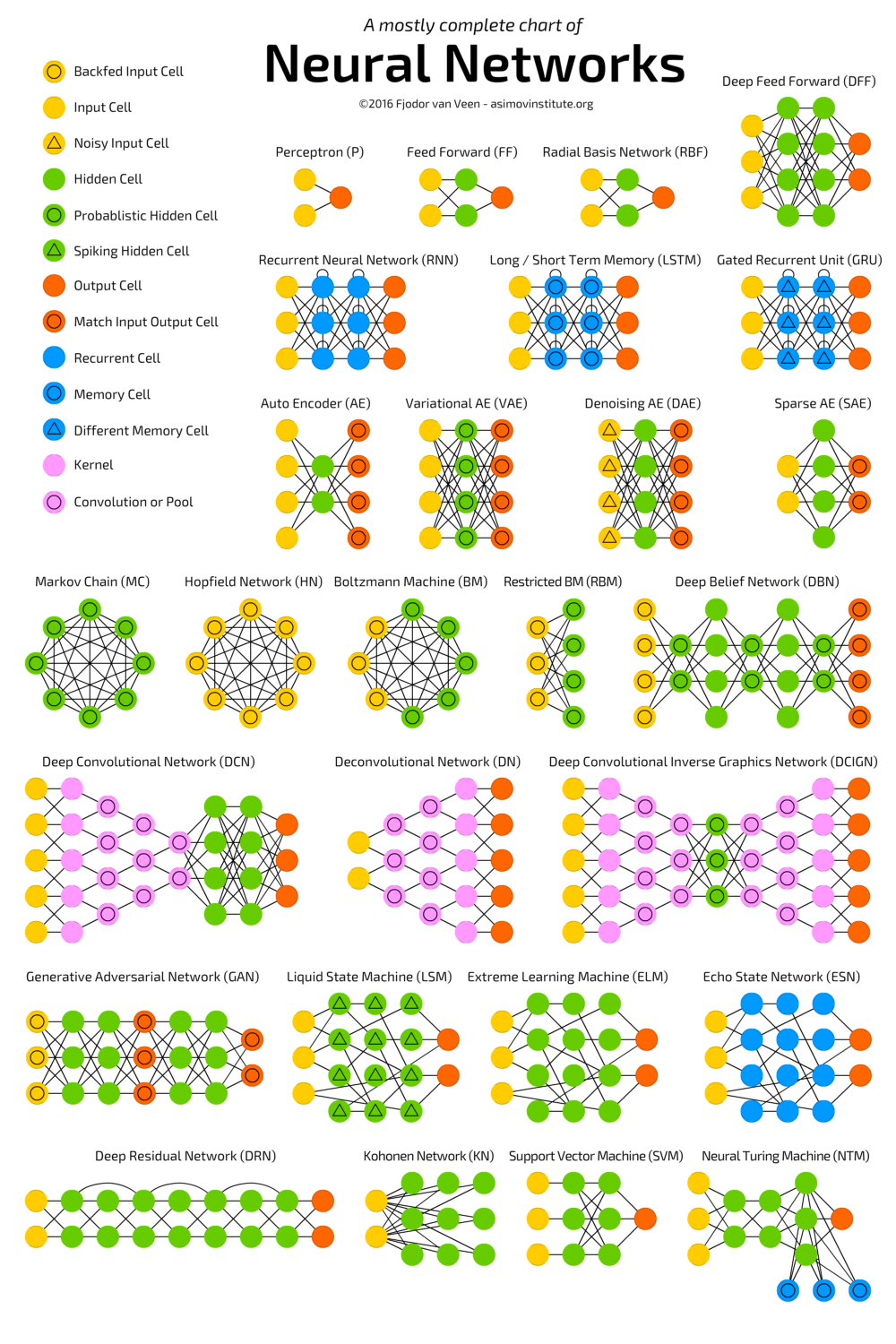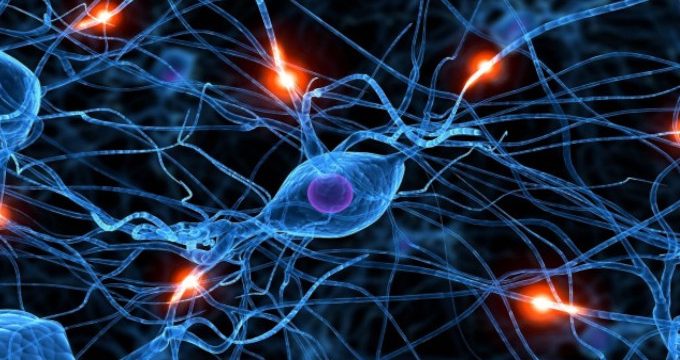Tech giants like Google and Microsoft have recently announced that they are adopting the AI-first approach, which means they are ready to invest heavily into the development of solutions powered by artificial intelligence – even if it implies sacrificing short-term profit. More specifically, they are investing in the development of artificial neural networks – a computer technology imitating a functioning of a brain.
It’s not only tech giants, though. The neural network software market is predicted to reach $22, 55 billion by 2021 (Markers and Markets) at an impressive CAGR of 33%, as companies across industries are increasingly finding a vast array of applications for this cutting edge-technology.
So what are neural networks and how are they applied in business? In this article we will define the concept of a neural network, and explore different neural network types and their typical use cases.
What Are Neural Networks?
Techopedia defines a neural network as “a computational model based on the structure and function of biological neural networks”. In other words, artificial neural networks (ANN) imitate human brain, but are not identical to it. What is similar, though, is their ability to learn by experience, or by considering examples. For instance, by processing a number of pictures, neural networks can learn to identify images they contain and can be used in image recognition.
In computer science, a “self-learning ANN” means that a neural network changes in accordance with the information that flows through it, based on input and output. The structure of a neural network includes nodes, also known as artificial neurons, connected and capable of transmitting signals. The nodes are arranged in layers. Unlike Machine Learning algorithms, which can only self-learn to a certain level, ANN has almost unlimited learning potential. The more info it processes, the more it develops.
Initially, ANNs creators aimed to create a computational copy of a human brain. As neural networks evolved, they deviated from the original idea and are now much more diverse and complex. The branch of Machine Learning which uses different types of neural networks to work with data is called Deep Learning.
Types of Neural Networks And Their Applications
Let’s now explore some of the most important types of neural networks and how they are applied.
1. Feedforward neural network
This is the most simple ANN type. As the name implies, in this type of network the data moves through artificial neuron tiers only in one direction, which is forward. Such thing as backpropagation and non-linear movement are characteristic of other, more sophisticated neural networks. In a feedforward neural network an output is a sum of all input products fed into the system.
In business, computer vision (enabling AI to extract information from images) and face recognition technologies applied in security, healthcare and marketing are based on this type of ANN.
2. Radial Basis Neural Network
This type of ANN takes into account the distance of any particular point to the center. Radial Basis Networks have two layers: the inner layer combines the features with radial basis function. When the same output is calculated in the next time-step, the output of these features is taken into account.
Typically such neural networks are used in power restoration systems. During electricity blackouts, such systems help restore power as quickly as possible.

3. Multilayer perceptron
This is yet more complex ANN configuration that can have three or more layers. This type of a neural network is fully connected, meaning that every single node in a layer connects to every node in the next layer. A non-linear activation function is used in this ANN type.
Multiple perceptron has found application in voice recognition and machine translation tools.
4. Convolutional neural network (CNN)
Convolutional neural networks (CNNs) are, in essence, based on multilayer perceptrons. These types of networks comprise one or several convolutional layers, which are either interconnected or pooled. The convolutional layer performs a convolutional operation during the input and then passes the result to the next layer. This type of network can become exceptionally deep, although with limited parameters.
Convolutional neural networks have a vast variety of applications: natural language processes, image recognition and video recognition, recommender systems, etc. They are also applied in agriculture, to process images from satellites and predict weather conditions. CNNS are used for face recognition, analyzing documents and historical records, advertising and other fields. They can also be applied to fight climate change and predict the outcome of human initiative aimed at curbing the greenhouse effect.
5. Recurrent Neural Network (RNN)
The operations in a recurrent neural network start the same way as in a feedforward network – with forward propagation of network. The initial output is thus the result of all data weights and values fed into the system. As the data proceeds to the next layers, the recurrent process begins.
Each node of this network will remember some information from the previous step and will use it in the next step. The network self-learns as it uses the data it has remembered. RNNs are especially effective in text-to-speech conversion.
6. Modular Neural Network
This ANN type combines different neural networks that perform a number of tasks and sub-tasks. In a modular neural network, all the subnetworks it contains work independently of each other to achieve the output. Because there is no interconnection, computations accelerate and the neural network delivers ther results faster. These neural networks can differ in design and architecture and have a variety of applications, for example, continuous natural speech recognition.
7. Sequence-to-sequence models
A sequence-to-sequence model is built of two neural networks – one of them acting as an encoder to process input and the other – as a decoder to process output. These networks may have identical or different parameters. Such network type is used primarily when the length of input and output parameters are not the same.
Sequence-to-sequence models are used for building chatbots and any question-and-answer systems, as well as for machine translations.
Real-Life Application Of Artificial Neural Networks
In the foreseeable future, ANNs may play a key part in helping build human-level artificial intelligence. Currently, though, neural networks are finding application in a number of industries, from healthcare to retail. In more concrete terms, which consumer and business apps were built using ANNs? Could we be using them now, not knowing we are experiencing a neural network in action?
For example, social networks like LikedIn, use neural network tools to filter out abusive content, to recognize content types and provide recommendations.
Kairos is a company using Machine Learning and face recognition techniques to create advanced tools for fraud detection.
Virtual assistants like Apple’s Siri or Google Assistant are familiar to everyone. Cortana and Speechnotes are other examples of business software based on neural networks. Listenbycode is another ANN-based system for converting voice into text.
At VARTEQ we have robust experience of using artificial neural networks to build a variety of tools and services. For example, we have used convolutional neural networks to develop a price label recognition systems for the Client (under NDA).
We have also built a service used for search and detection of ads and products on photographs and videos using a Convolutional neural network (CNN) and Computer Vision. The service helps marketers evaluate their brand products visibility and screen time on videos and improve targeting of their marketing campaigns. It is also used in merchandising – to see how many of the brand products are placed on the front shelves in the retail stores.
We have also used technologies like Convolutional neural network (CNN), Recursive neural network (RNN), Long short-term memory (LSTM), and Sequence-to-sequence models to build a range of solutions for healthcare sector to assist radiologists, ultrasound diagnostics and other medical scanning experts in processing medical images.
Wondering how you could use ANN potential to propel your business? Talk to our expert team now to get a clear picture.

